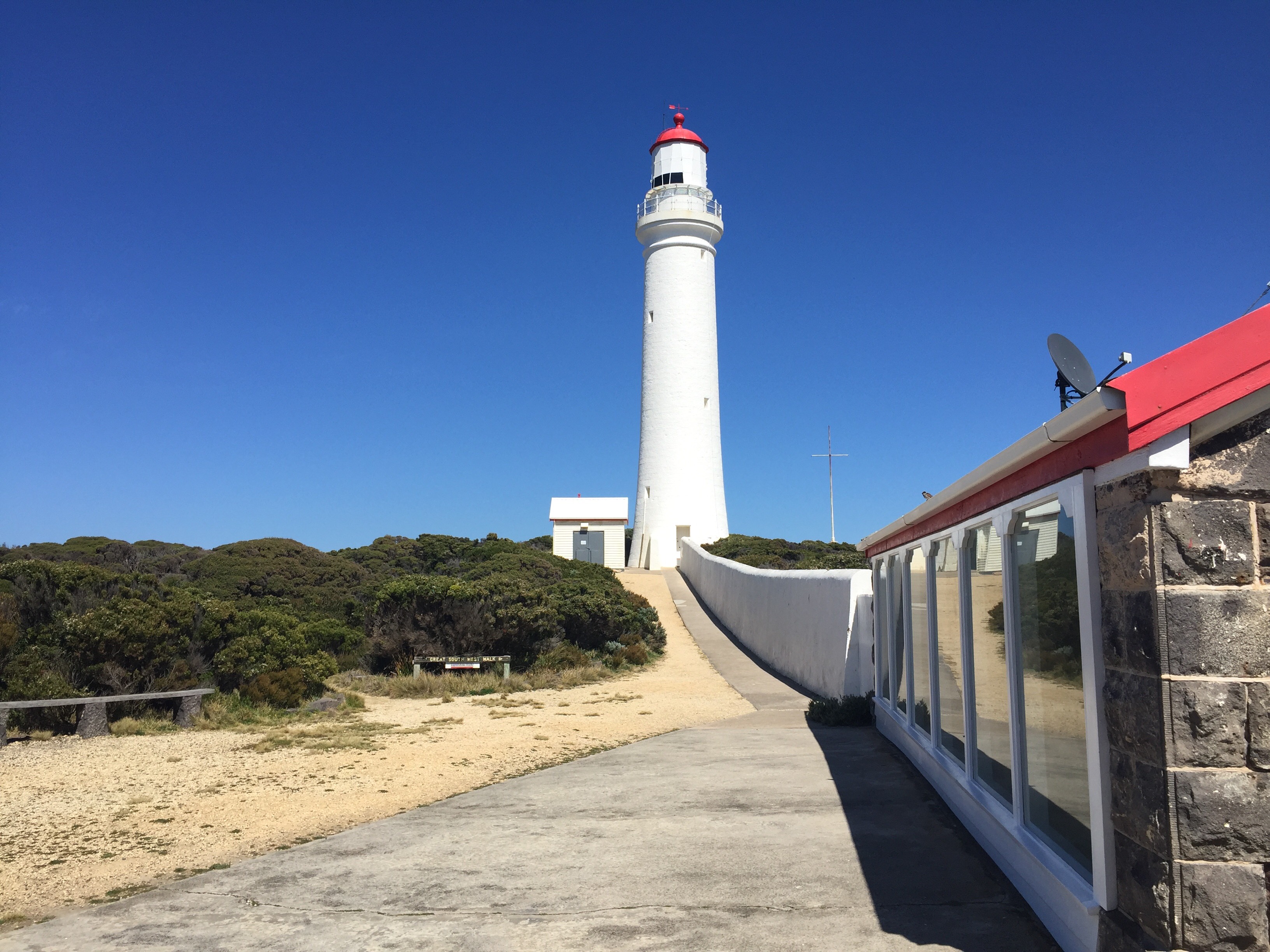
On 7th July 1884 the Cape Nelson Lighthouse was officially lit. The need for a lighthouse west of Portland had been apparent since the earliest years of European settlement. The state of navigation, the nature of sailing vessels and the treacherous coastline meant that vessels were in danger as they made their way to and from Melbourne to Adelaide. From time to time there were major ship wrecks.
In 1854 a government committee recommended that lighthouses were built on a number of prominent headlands along the Victorian coastline, with a major open-ocean lighthouse to be erected at Cape Bridgewater.
Portland Harbour master James Fawthrop submitted a report in 1856, asserting that ” a light exhibited on Cape Nelson would be preferable”. His compelling arguments won the day and Cape Nelson became the preferred site .
Governments of the day always seemed to have more pressing priorities. However maritime disasters and near misses ensured that the need for a lighthouse remained pressing.
The eventual construction of the lighthouse appears to have come about as a political favour! Local parliamentarian William Tyherleigh is said to have supported Peter Lalor, the hero of Eureka and later an influential politician, at a critical time. Lalor held several ministries and became the speaker of the Legislative Assembly in 1880. He is believed to have returned Tytherleigh’s favor by throwing his considerable influence and prestige behind the push to have a lighthouse constructed on Cape Nelson. The site was surveyed in 1879 and tenders let in 1882 for the construction of the lighthouse and two cottages. A memorial stone was laid on Cape Nelson on Thursday 19th April by the mayor of the Borough of Portland, James Trangmar.
Despite various problems, work proceeded at a satisfactory rate and the light was officially lit on July 7th 1884 30 years after the idea of a light to the west of Portland had first been advocated. Mayor P.W. Shevill lit the white light whilst former mayor W.T.Pile lit the red light. In 1884 a telephone line was installed between the lighthouse and government offices in Portland. The telegraph system meant that messages or warnings from the lighthouse could then be rapidly transmitted to the colonial capitol of Melbourne. In 1901, The Australian colonies federated to form the Commonwealth of Australia. Cape Nelson Lighthouse became a key part of a network of lighthouses guiding shipping around the continent.
The lighthouse’s powerful telescope and telephone enabled it to play a strategic role during World War 1, although no German raiders were sighted. Cape Nelson Lighthouse also played a part in World War 11 , when a radar station and support camp was established there to provide early warning of Japanese war ships and ship launched air craft. The installation included lookouts, an air raid shelter, quarters and a gun emplacement. The radar station was apparently linked to the Air Force base at Mount Gambier, which operated between 1941 and 1946. The radar station also protected Portland’s Port. Redevelopment of Portland’s port in the 1950’s and 1960’s underlined the importance of the Cape Nelson Lighthouse in protecting shipping throughout the region.
The 1980’s saw the development of the Great South West Walk, linking Cape Nelson Lighthouse to Cape Bridgewater and Portland via scenic coastal and inland walks.
In 1987 the light was connected to main power and in the 1990’s the lighthouse was “de-manned” or automated, ending an era of lighthouse keepers dating back to 1884.
Be that as it may the Cape Nelson Lighthouse continues its vital role in keeping our regional seas safe. Operated by the Australian Maritime Safety Authority, its white group light, flashing four times every twenty seconds can be seen some 21 nautical miles out to sea.
